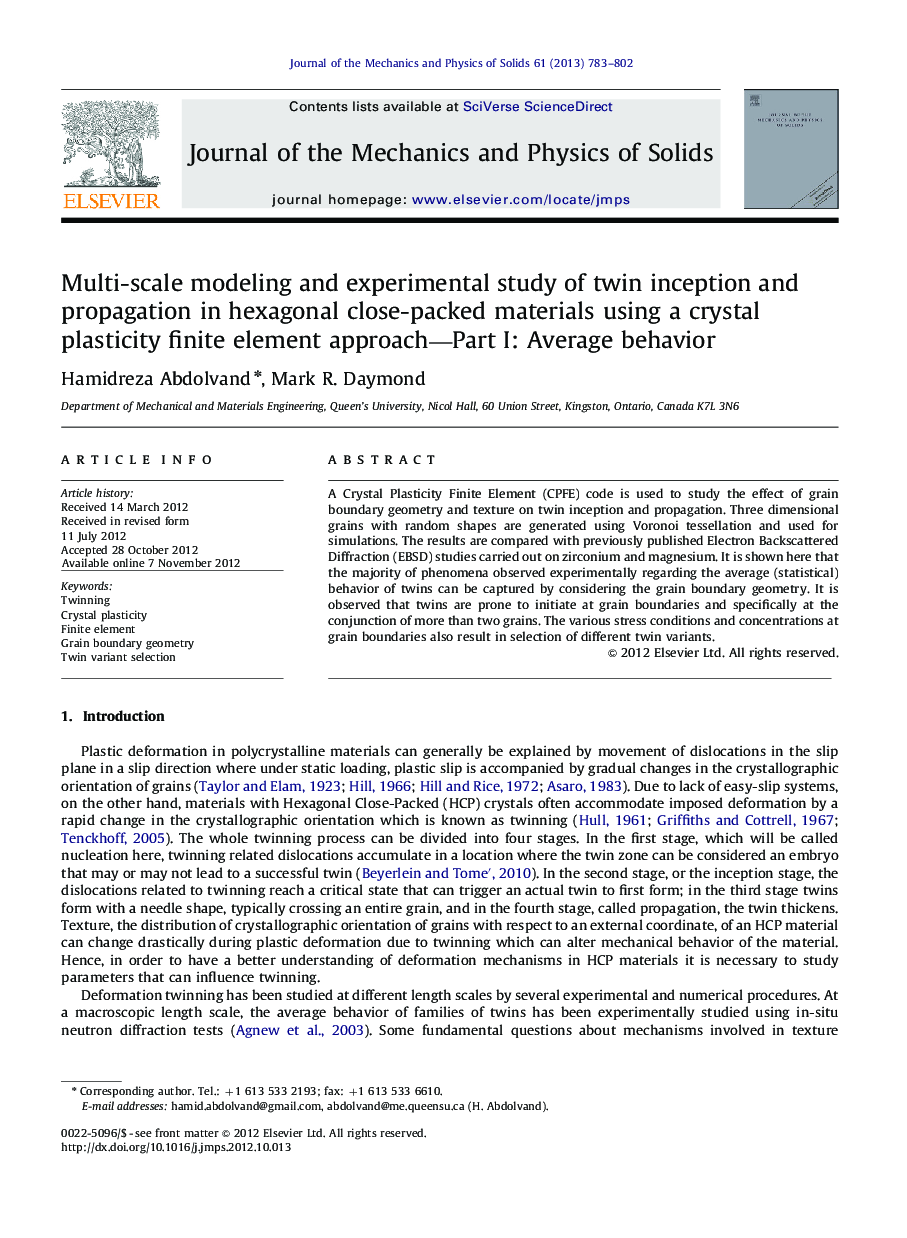| Article ID | Journal | Published Year | Pages | File Type |
|---|---|---|---|---|
| 799494 | Journal of the Mechanics and Physics of Solids | 2013 | 20 Pages |
A Crystal Plasticity Finite Element (CPFE) code is used to study the effect of grain boundary geometry and texture on twin inception and propagation. Three dimensional grains with random shapes are generated using Voronoi tessellation and used for simulations. The results are compared with previously published Electron Backscattered Diffraction (EBSD) studies carried out on zirconium and magnesium. It is shown here that the majority of phenomena observed experimentally regarding the average (statistical) behavior of twins can be captured by considering the grain boundary geometry. It is observed that twins are prone to initiate at grain boundaries and specifically at the conjunction of more than two grains. The various stress conditions and concentrations at grain boundaries also result in selection of different twin variants.
